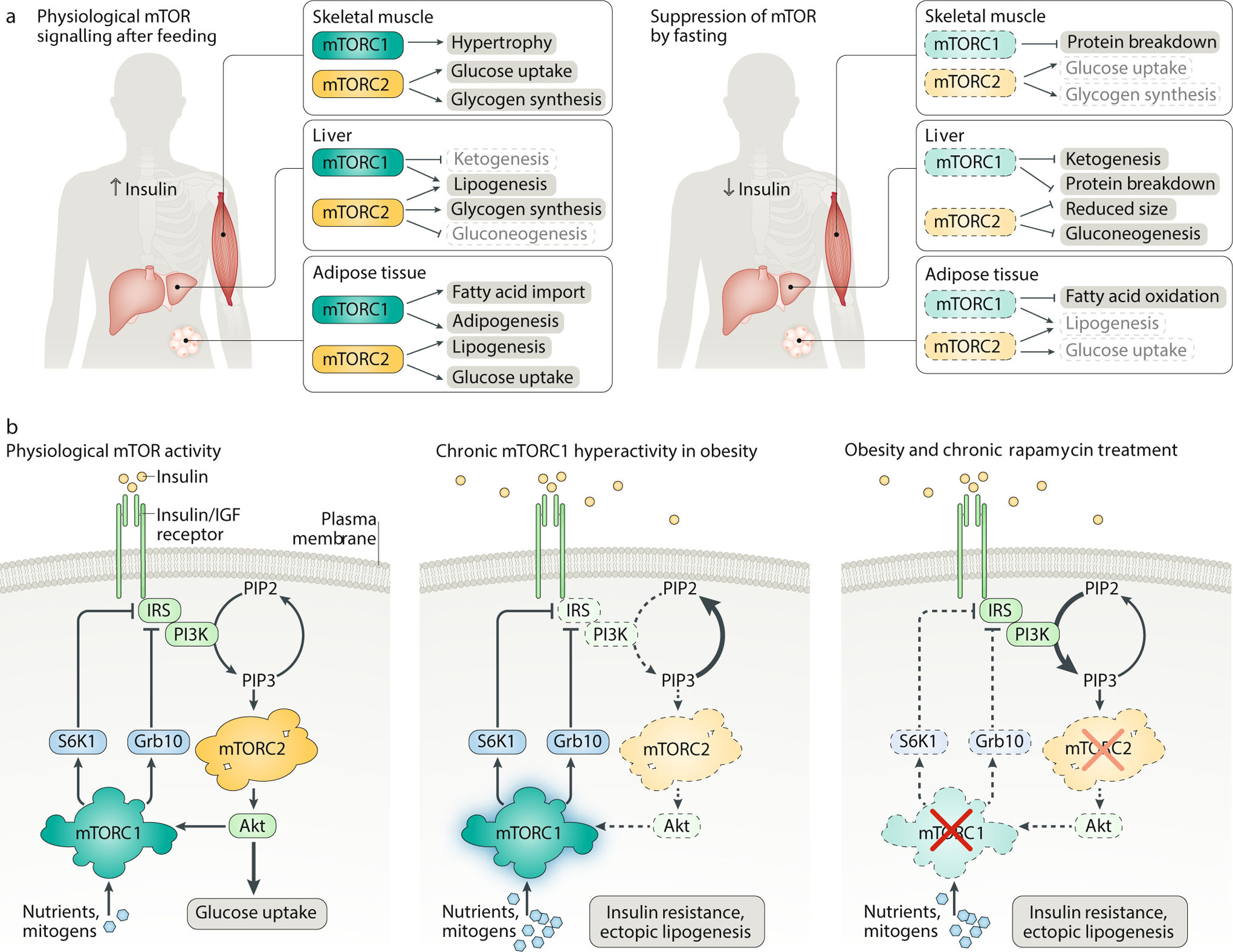Fig. 4: mTOR signalling in metabolism.

A. mTOR coordinates feeding and fasting with nutrient storage and mobilization. In the liver, skeletal muscle and adipose tissue, rising insulin levels after feeding activate both mTOR complex 1 (mTORC1) and mTORC2, promoting lipogenesis, glycogen synthesis and protein synthesis (left). During fasting, the nutrient, growth factor and insulin levels drop precipitously, tilting the metabolic balance in favour of gluconeogenesis, ketogenesis and lipolysis (right). B. Dysregulation of mTOR signalling in metabolic syndrome. Although the negative feedback loop between mTORC1 and mTORC2 is carefully balanced under physiological conditions (left), chronic hyperactivation of mTORC1 by excessive nutrients and mitogens can shut off PI3K–mTORC2 signalling, leading to insulin resistance, ectopic accumulation of lipids in the muscle and liver, and type 2 diabetes (middle). Rapamycin-based therapies have not been effective in diabetes patients with hyperactive mTORC1 signalling because prolonged rapamycin treatment also inhibits mTORC2 (right). Grb10, growth factor receptor-bound protein 10; IGF, insulin-like growth factor; IRS, insulin receptor substrate; PIP2, phosphatidylinositol (4,5)-bisphosphate; PIP3, phosphatidylinositol (3,4,5)-trisphosphate; S6K1, p70 S6 kinase 1.
